J.F. Lian lost part of his nose due to skin cancer in 2022, and thanks to 3D printing technology, this man now has a new nose.
Lian, 73 years old, who had a portion of his nose removed during skin cancer treatment two years ago, had to wear a mask in public and lived with a large hole in his face. But now he can look forward to a different life.
This is the first time Tan Tock Seng Hospital has produced a custom 3D-printed nose for a patient, and it required numerous trials and iterations to create the final product.
The research team at the 3D Medical Printing Center at Tan Tock Seng Hospital scanned Lian’s face before he underwent surgery. With the digital model, they could begin to reshape the patient’s nose.

Researchers scanned Lian’s face before the surgery.
(Photo: The Straits Times).
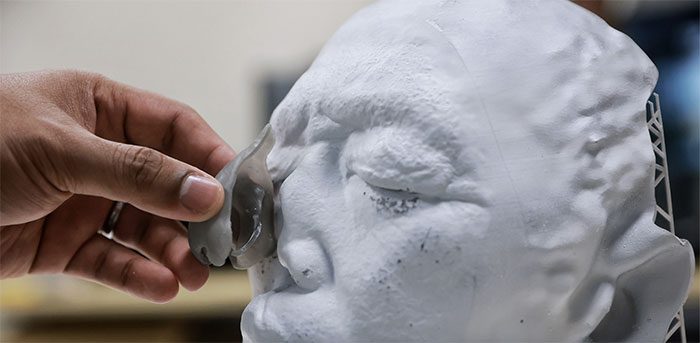
3D print of J.F. Lian. (Photo: The Straits Times).
Lian’s New Nose
Factors that the research team considered included the weight and material of the prosthetic nose. The most important aspect was that the nose had to be comfortable for Lian to wear.
The team also had to ensure that the nose would always fit well. At some point, as J.F. Lian’s wound healed, the nose molds might no longer match his face.
Initially, researchers attempted to attach the 3D nose to Lian’s face using a clip, but that clip proved inconvenient for long-term use. Consequently, the researchers decided to design and install a prosthetic nose for Lian. This was a pilot project for Tan Tock Seng Hospital and marked the first prosthetic nose created by a team of doctors and 3D engineers there.
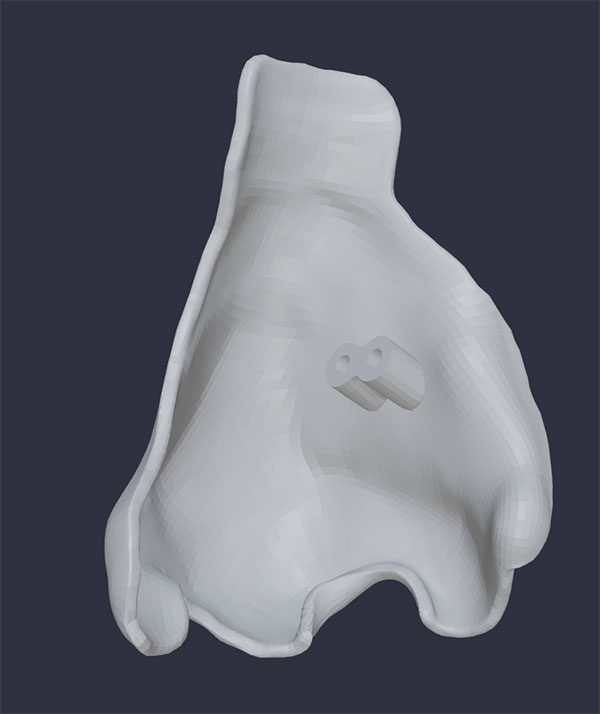
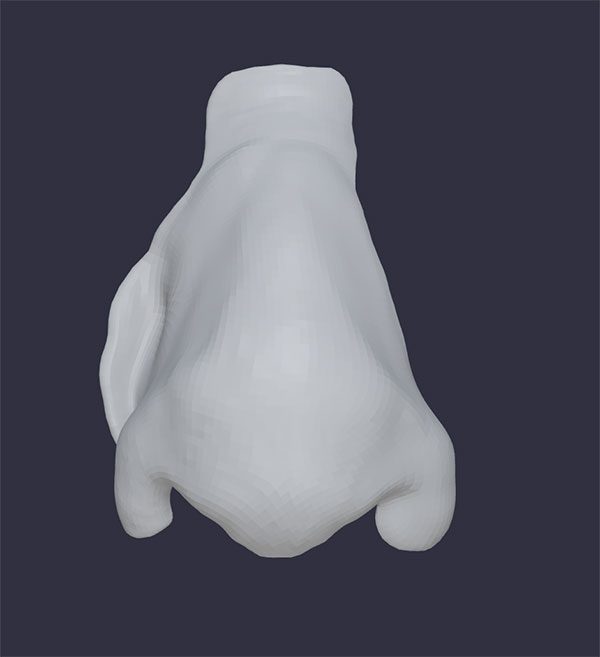
Leading this groundbreaking project is Dr. Michael Yam, an orthopedic surgeon and head of the 3D Medical Printing Center at Tan Tock Seng Hospital.
Using medical imaging, the center prints organ models for patients, allowing doctors to better explain conditions and treatment methods.
Engineers from Medairum were sent to the center to handle 3D printing tasks. Medairum, specializing in medical 3D printing, was one of the licensed companies to produce 3D-printed Covid-19 swabs in the early days of the pandemic.
Dr. Yam, who has been experimenting with 3D printing technology since 2019, stated: “When he had the nose, I felt very satisfied because it felt like I was giving something back to him.”
Nirodha Ariyaratne, the CEO of Medairum, noted: “It’s great to see Mr. Lian happy wearing the nose and feeling comfortable not wearing a mask.”
The success of this pilot project has paved the way for other custom prosthetics projects at the 3D printing center of Tan Tock Seng Hospital. Since then, the hospital has also executed two other major projects: a functional prosthetic finger and a protective skull cap.
Prosthetics or artificial limbs can help patients regain both functionality and confidence.
The recipient of the functional finger is Russel Ko, 21 years old, who lost a finger in a traffic accident in 2022. The prosthetic finger has restored his ability to perform daily activities and allowed him to “feel normal” again.
The research team also created a skull cap for patients awaiting skull reconstruction surgery. After part of their skull is removed due to a stroke or accident, this cap will help protect their brains.
How the 3D Nose is Formed
The designs of the 3D-printed prosthetics are adjusted based on the requirements of each patient.
Lian’s prosthetic nose required more than seven iterations. Dr. Yam explained that the nose model might look perfect on a computer but may not fit well in real life.
The team painstakingly examined whether the nose was comfortable for Lian to wear long-term and how it positioned itself as he moved or engaged in various activities.
The team experimented with different materials. Researchers sought something biocompatible to ensure the 3D print would not cause any skin allergies or harmful effects on the patient.
The material for the nose also had to be certified by regulatory bodies like the U.S. Food and Drug Administration and the Health Sciences Authority in Singapore. Taking these considerations into account, they decided to use synthetic resin designed for dental prosthetics. The final product is a 12g prosthetic made from printed plastic.
|
The 3D printing technique used is stereolithography: creating layered structures by hardening liquid resin when exposed to UV light. The process of printing Lian’s prosthetic nose took about an hour. Next, the 3D print was removed from the printer and soaked in isopropyl alcohol to remove excess resin. Then, the 3D model was placed in a curing machine and hardened under ultraviolet light. Finally, the model underwent trimming, sanding, and polishing before it was ready for painting. The final challenge was matching the 3D print to Lian’s skin tone. |
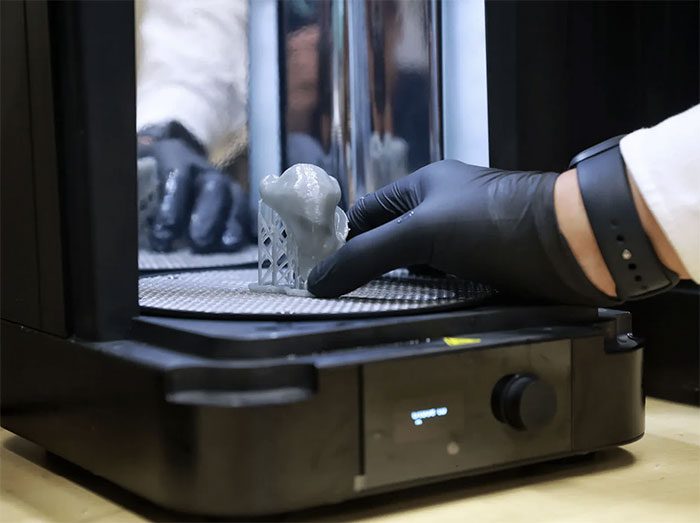
The process of creating the 3D nose. (Photo: The Straits Times).
Jessie Goh and Ho Ee Na from the Institute of Technical Education (ITE) were responsible for this task. Goh, head of the beauty and wellness course at ITE College East, has many years of experience in stage makeup, but painting a prosthetic is a new and challenging endeavor for her.
Goh stated: “The type of work we do usually lasts a few hours or a day, but this nose will be used daily.” The duo met with Lian five times at the 3D medical printing center, mixing layers of acrylic paint to find the right beige tone that matched his face.
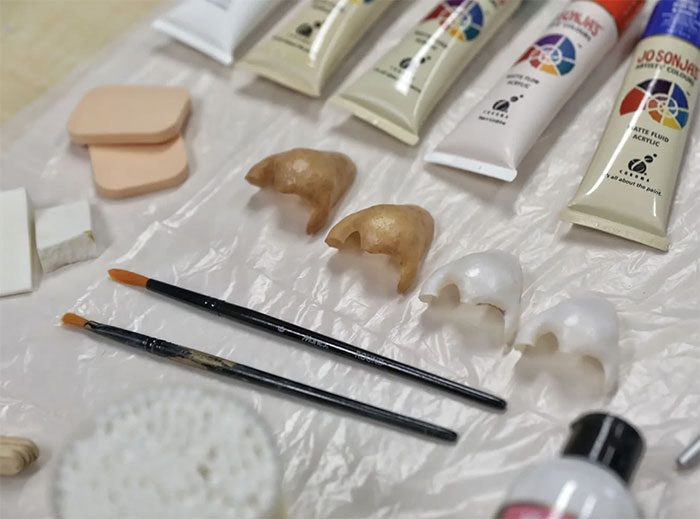
It took several trials for Goh to find the right skin tone for Lian’s nose. (Photo: The Straits Times)
Dr. Yam remarked that 3D printing could be a solution for many medical issues. “We want 3D printing to be more accessible to patients.”
Despite the success of Tan Tock Seng Hospital in Lian’s case, Singapore still has a long way to go in the field of medical 3D printing.
There are high-fidelity 3D prints, such as implants and custom prints, that the hospital has yet to explore.
Medical 3D printing technology is predicted to become a trend in the future due to its convenience and aesthetic appeal it offers to patients.



















































